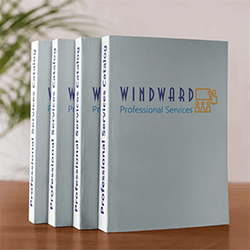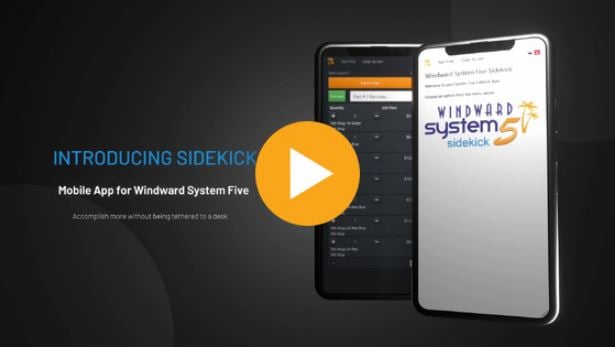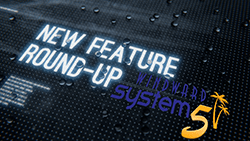'B' type invoice overview
The back order invoice is similar to an A Type invoice in that the total value of the invoice is charged to the customer's account. However, not all of the items have been shipped to or delivered to the customer. This invoice type provides advanced functionality which can cause confusion, therefore it is recommended that you speak with your trainer before implementing the use of this special invoice type in your business.
- Warning: When creating estimates well in advance it is possible to have items on an Estimate that are Marked for Deletion in the Inventory after the estimate is created. System Five displays a warning dialog containing a list of any items Marked for Deletion when you convert the Estimate to a Final Invoice. Items Marked for Deletion are ignored by the Required Orders Report.
Related Topics
- Invoice Setup - Main Invoice Types
- Invoice Options 1 - Use Back Orders on Invoices
Known Issues
'B' Type invoices can cause issues with other features within the system. This feature was created to meet very specific requirements and should only be used if none of the following know issues do not negatively affect your business operations.
Tax collection and remittance becomes an issue when the total amount of the invoice is posted to the A/R sub-ledger prior to the actual collection of the money from the customer. In most tax jurisdictions, the moment the Invoice is posted as a receivable, the retailer is required to remit the taxes collected to the proper authority.
Special orders can be setup to be automatically filled when the purchase order is received. This feature is not compatible with the 'B' type invoice and therefore it cannot be used for any invoice type, if 'B' type invoices are in use.
What makes a 'B' Type invoice different?
The line total for each item is the Ordered value times the Price value, similar to work orders but unlike all other invoice types, where the line total is Shipped value times the Price value. This allows you to charge on the full invoice amount even though the invoice still has backorders. The B type invoice allows you to see which date each line or part of a line was shipped. You can print out packing slips that only show you the shipped items for a specific date.
A 'B' type invoice is a final type of invoice which updates the customer's account balance with the full amount of the invoice. Taxes are also posted in the book month in which the invoice was created. You may be paying taxes on items you have not yet shipped or collected the money for. You have billed and/or collected from the customer for these taxes so they should be remitted.
Setup for B Invoices
To start using B type invoices the setup is minor. First you need to specify an "Unearned Revenue" account in the special ledger numbers and add this ledger account to your Chart of Accounts.
Next you must add the invoice type to the set of invoice types you wish to work with. This is done in Invoice Setup. Simply drag the "B Invoice" type to the list on the left and define which forms you want to print with the "B Invoice".
Using B Invoices
'B' type invoices are created in the same manner as all other Invoice types. An example of a 'B' type invoice is shown in Figure 1.

Figure 1: 'B' Type invoice example
In this example the Ordered column contains 10, the Shipped column contains 0. However the Total column contains the Ordered quantity times the Price. The invoice can be saved as is and the Total of $137.50 is charged to customer's account.
When you are ready to ship the items to the customer, enter the quantity to be shipped in the Shipped column, as shown in Figure 2.

Figure 2: Filling in the Shipped column
The first time you enter a quantity to ship, you are prompted for a Shipping Date. Do not pre-enter shipping dates for items that you wish to ship in the future, this removes the items from stock immediately. System Five moves the Shipped quantity to a different view with the shipped date assigned. The various views available in 'B' type invoices all relate to the shipping date of the items or the items that have not been shipped.
The views are detailed below:
Full View
Select 'Full View' from the drop down box located in the upper left corner of the Items tab, as shown in Figure 3.

Figure 3: The Ship Date drop down
The 'Full View' displays all invoice items at once, as shown in Figure 4.

Figure 4: The Full View example
Non Shipped
The 'Non Shipped' item has a date after it if items have been shipped during the current editing session.
Select 'Non Shipped' from the drop down box located in the upper left corner of the Items tab, as shown in Figure 5.

Figure 5: The Non Shipped view
Shipped on Date
Select an item that is a date from the drop down box located in the upper left corner of the Items tab, as shown in Figure 6.

Figure 6: The Shipped on Date view
This view shows you how many items you shipped on the selected date. If there are several ship dates, each is displayed in the drop down list. If there is more than one shipment on the same date, the system adds consecutive letters to the end of the date.
i.e. 02/12/2005-A, 02/12/2005-B etc.
System Fives also gives you the ability to restrict 'B' type invoices --- MUST have all items shipped before invoice can be completed.
Setup Wizard >> Invoice Setup >> Invoice Options 1
Ticking Require that all items are shipped before completing an invoice will not allow you to convert a non-final invoice such as Estimate, Work Order, Layaway to a final invoice such as Cash, A/R if you have outstanding backorders.

Note: This feature DOES NOT prevent you from changing the shipped quantity on a final invoice. You can still create a backorder situation on a final invoice by reducing the shipped quantity of an item.
Invoice Postings
If we post the original invoice with no items shipped, the ledger transactions appear as below.
Account Book Month Description Debit Credit
1050 03/2003 A/R 134.47
4100 03/2003 Unearned Income 134.47
2888 03/2003 Unearned Revenue 134.47
4100 03/2003 Puzzle, 1000 Pieces, Balloons 134.47
You can see that the total income is zero and the A/R is offset by the unearned revenue. If there were taxes, the difference between the A/R and unearned revenue would be the taxes.
After shipping four items, the invoice posts as below. Notice that the transactions are spread over two book months, March (when the invoice was created) and April (when four items were shipped).
Account Book Month Description Debit Credit
1050 03/2003 A/R 134.47
2888 03/2003 Unearned Revenue 134.47
4100 03/2003 Unearned Income 134.47
4100 03/2003 Puzzle, 1000 Pieces, Balloons 134.47
1200 04/2003 Inventory 20.91
2888 04/2003 Unearned Revenue 53.79
4100 04/2003 Unearned Income 80.68
4100 04/2003 Puzzle, 1000 Pieces, Balloons 134.47
5100 04/2003 Cost 20.91
With four items shipped, the new income is 53.79, the cost is 20.91.
The total revenue is now:
+ 1050 A/R +134.47
- 2888 Unearned Revenue -134.47
+ 2888 Unearned Revenue +53.79
= Total Revenue 53.57
The total Income is now:
- Unearned Income -134.47
+ Puzzle, 1000 Pieces, Balloons +134.47
- Unearned Income - 80.68
Puzzle, 1000 Pieces, Balloons +134.47
= Total Income 53.79
Unearned Revenue is:
+ 2888 Unearned Revenue +134.47
- 2888 Unearned Revenue -53.79
= Total Unearned Revenue 80.68
Exploding kits
Unlike other invoice types, when you ship the main item, the sub-items are not automatically shipped as well. You must manually enter the ship quantity for every line on the invoice.




